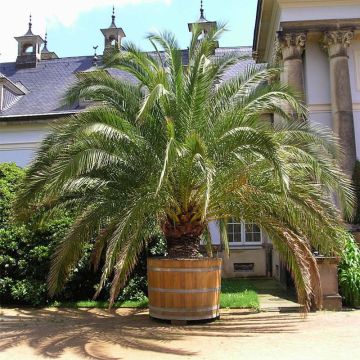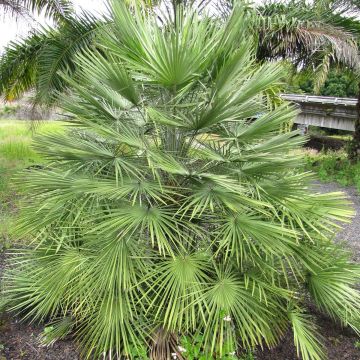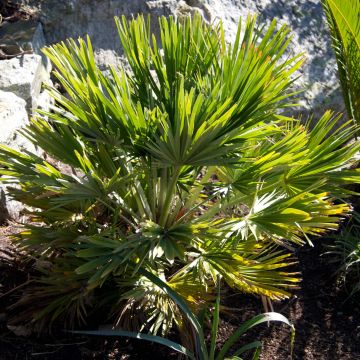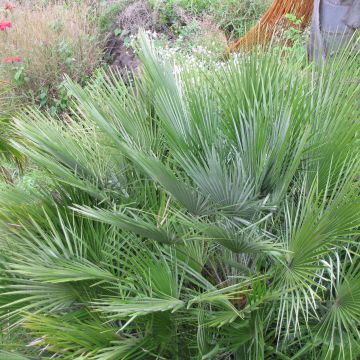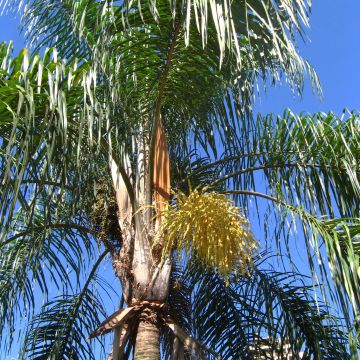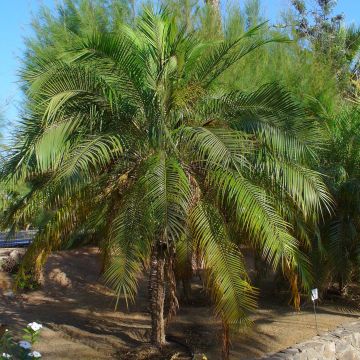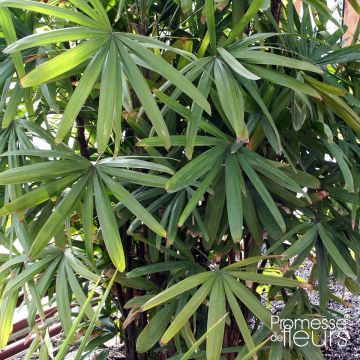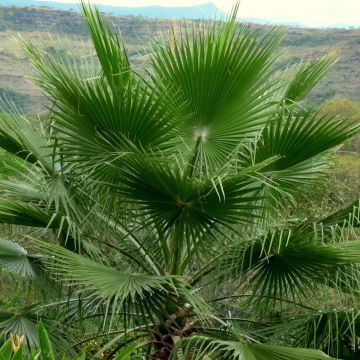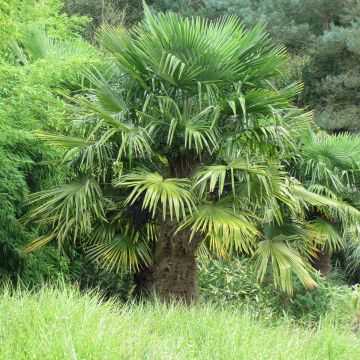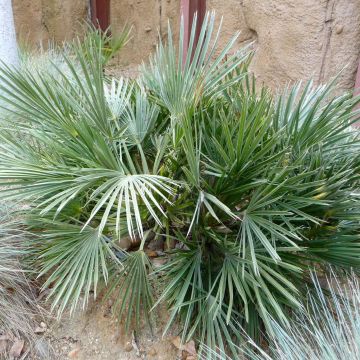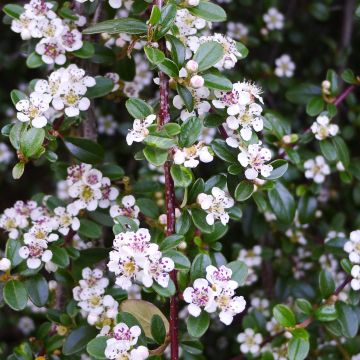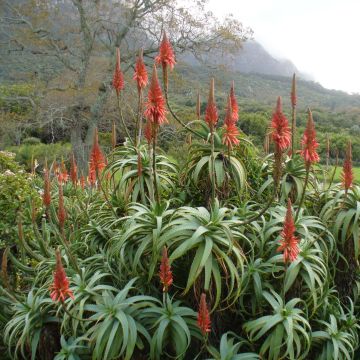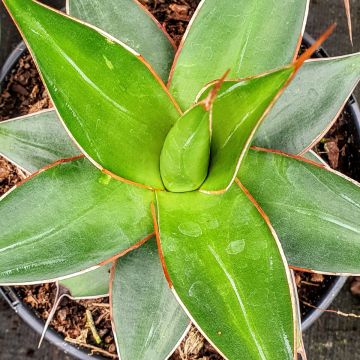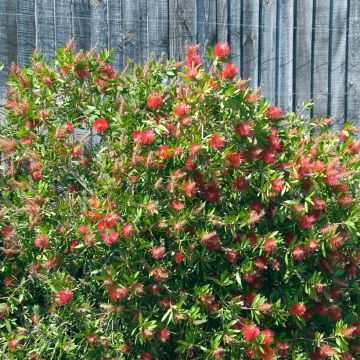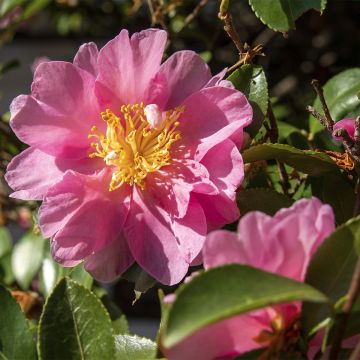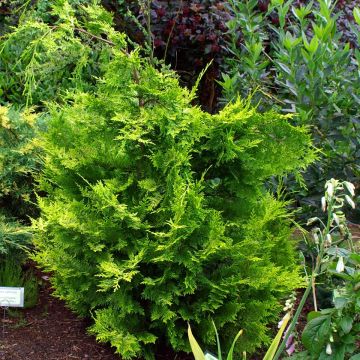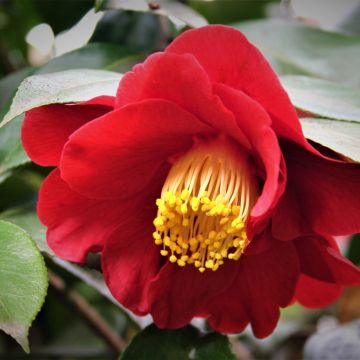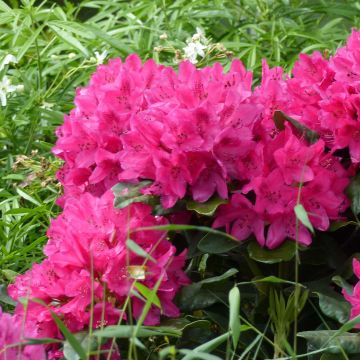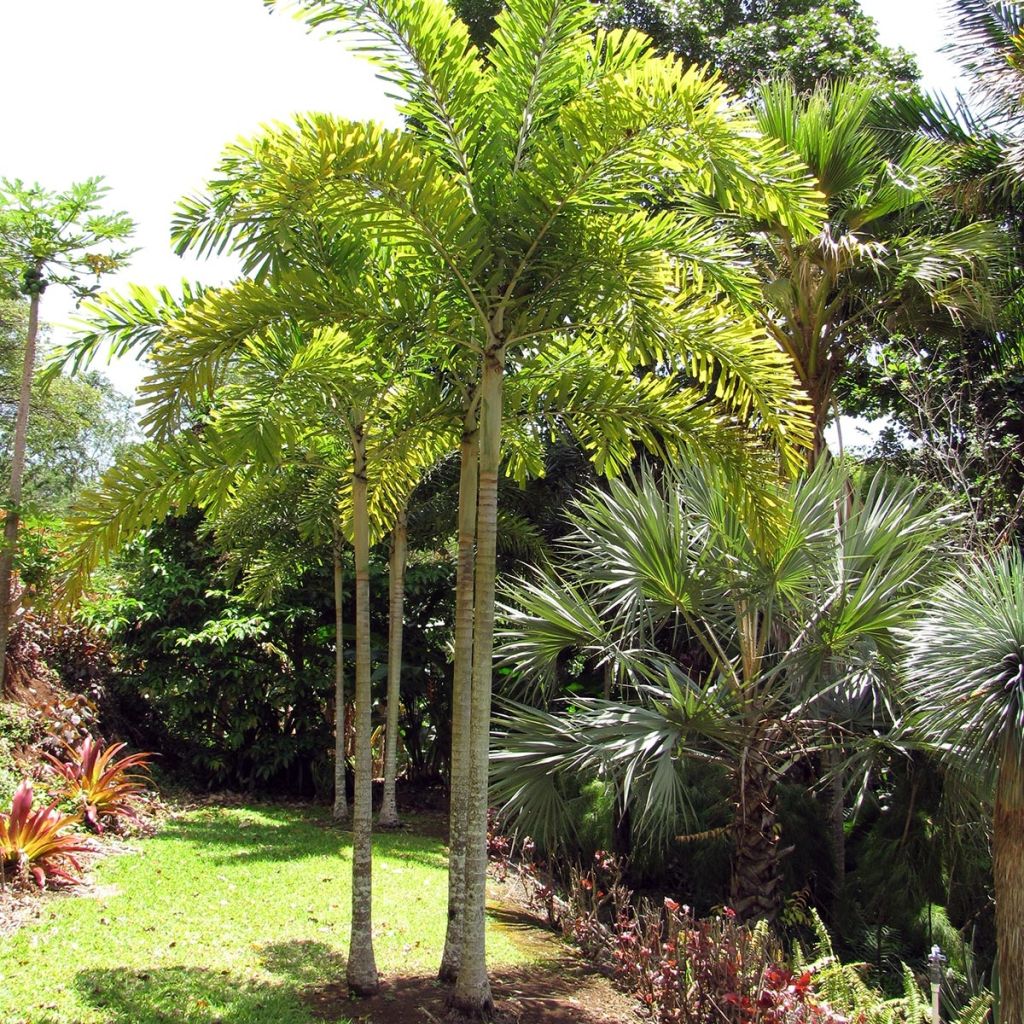

Wodyetia bifurcata - Foxtail Palm
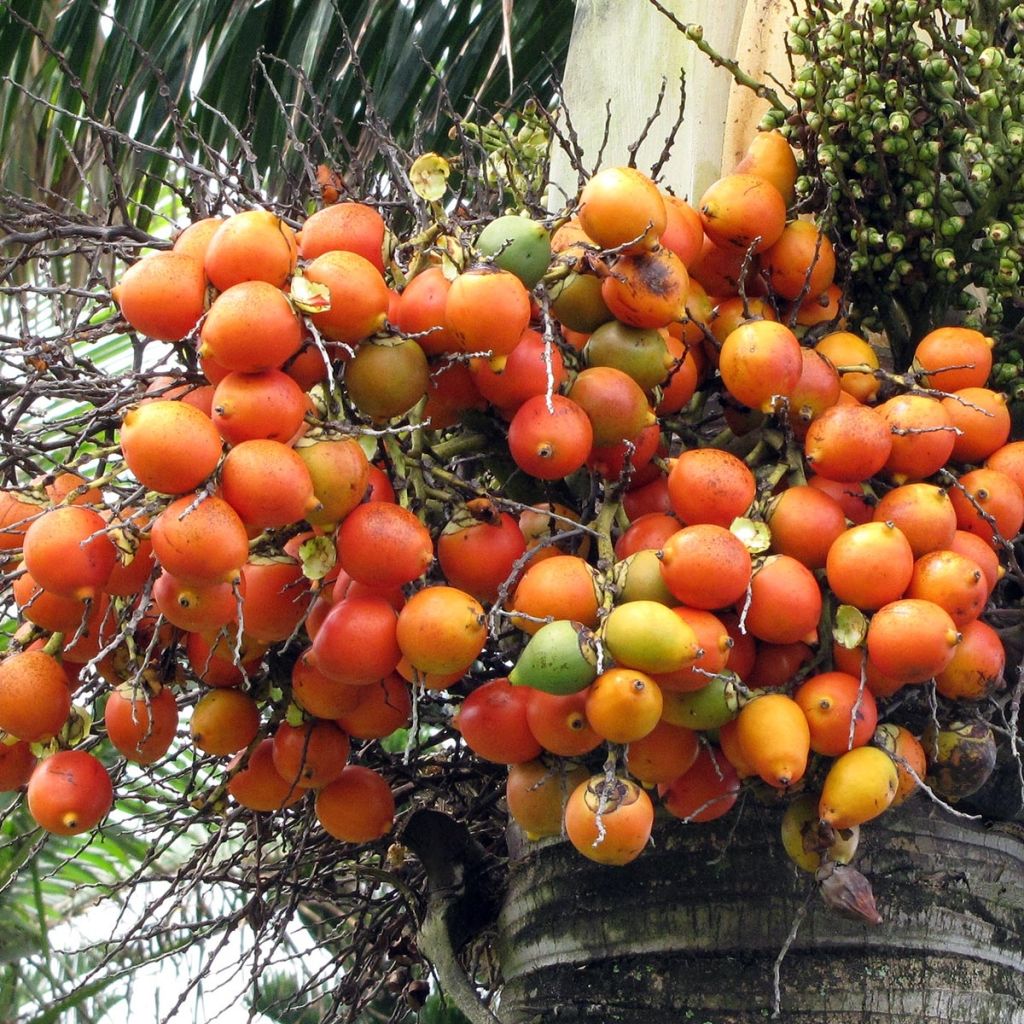

Wodyetia bifurcata - Foxtail Palm
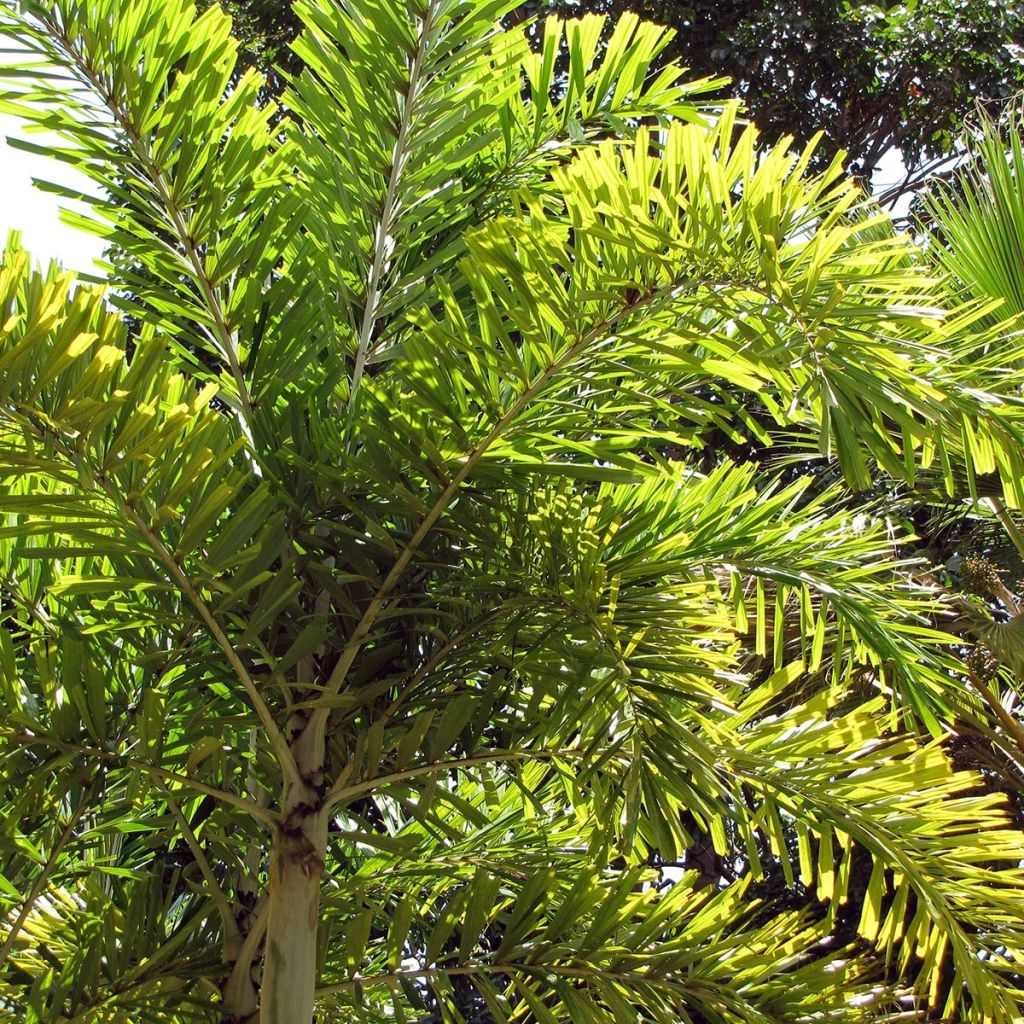

Wodyetia bifurcata - Foxtail Palm
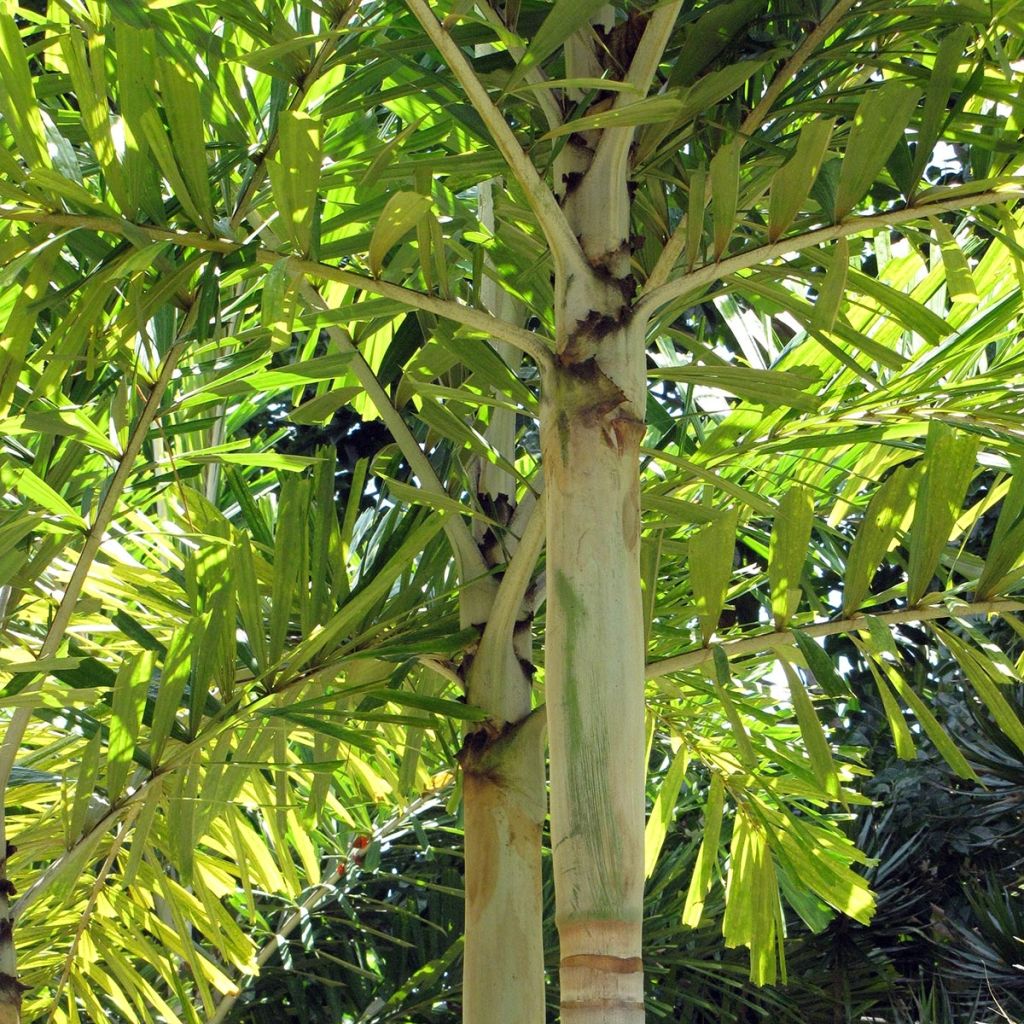

Wodyetia bifurcata - Foxtail Palm
Wodyetia bifurcata - Foxtail Palm
Wodyetia bifurcata
Foxtail Palm
Why not try an alternative variety in stock?
View all →This plant carries a 24 months recovery warranty
More information
We guarantee the quality of our plants for a full growing cycle, and will replace at our expense any plant that fails to recover under normal climatic and planting conditions.
Oversize package: home delivery by special carrier from €6.90 per order..
Express home delivery from €8.90.
Does this plant fit my garden?
Set up your Plantfit profile →
Description
Wodyetia bifurcata, commonly known as the Foxtail Palm, is considered by collectors as one of the most beautiful palms in the world. This species, native to Northeast Australia, is distinguished by its beautifully feathery and charmingly tousled foliage, gathered in a beautiful crown of arched fronds atop a tapered and ringed trunk. It is a less hardy plant but with rapid growth that will make a big impact in a seaside garden. It can also be grown in containers, which allows it to be protected from the cold in an unheated greenhouse or conservatory in winter, surrounded by other lush plants that naturally humidify the air.
Wodyetia bifurcata belongs to the Arecaceae family. It is native to Queensland, Australia, and is a species that thrives in full sun and rocky, well-drained soil, adapted to warm and temperate to tropical climates. Discovered in the 1970s, it was only described in 1983. An adult plant can tolerate a few degrees of frost, down to about -4 °C (24.8 °F) for a very short period. It is a low-maintenance palm that is water-efficient (when grown in open ground). Young plants take some time to establish themselves, but then their growth accelerates, especially that of the pseudo-trunk: 2 to 3 leaves are produced each year, but the 'trunk' elongates by 10 cm (4 in) each time a new leaf appears. In its natural habitat, Wodyetia bifurcata can reach heights of 15 to 20 m (49 to 66 ft), but its size will remain much more modest if grown in a container.
This Wodyetia develops a single trunk, called a stipe, which is thin (10-15 cm (4-6 in) in diameter), wider at the base, light grey in colour, smooth but marked with numerous leaf scars. In this species, dead leaves fall off on their own. Large pinnate leaves develop at the top of the stipe, erect at the base and drooping at the tips, measuring up to 3 m (10 ft) long. The leaf is divided into numerous pairs of leaflets arranged on several planes. Each leaflet has a bifid end, resembling a fish tail. Together, they give the leaf an extremely decorative feathery appearance. The leaves are dark green on top and light green underneath. The spectacular flowering occurs in summer, on mature plants aged 10 to 15 years, under favourable growing conditions. The inflorescences appear below the leaves; they are horizontal or pendulous and measure up to 1 m (3 ft) long. Branched, they bear separate male and female flowers, cream-white in colour. The ovoid fruits measure 5 to 6 cm (2 in) in length, are red-orange when ripe, and contain only one seed.
Undoubtedly, Wodyetia bifurcata is a beautiful addition for collectors and enthusiasts of exotic plants, whether they are simply amateurs or experienced gardeners. It will make a statement in a sunny seaside garden, as well as in a conservatory or greenhouse. It can be taken outdoors on the terrace from May to October, after an acclimatisation period. Like all palms, it is difficult to combine with other plants due to its strong personality: reserve it for a corner near a swimming pool or a prominent spot on the terrace, initially exposing it to shade so that it gradually gets accustomed to the sun. Surround it with Phormium – visual, understated, and colourful – or with agaves that are precise and geometric, or even with Cordyline, for example.
Report an error about the product description
Wodyetia bifurcata - Foxtail Palm in pictures
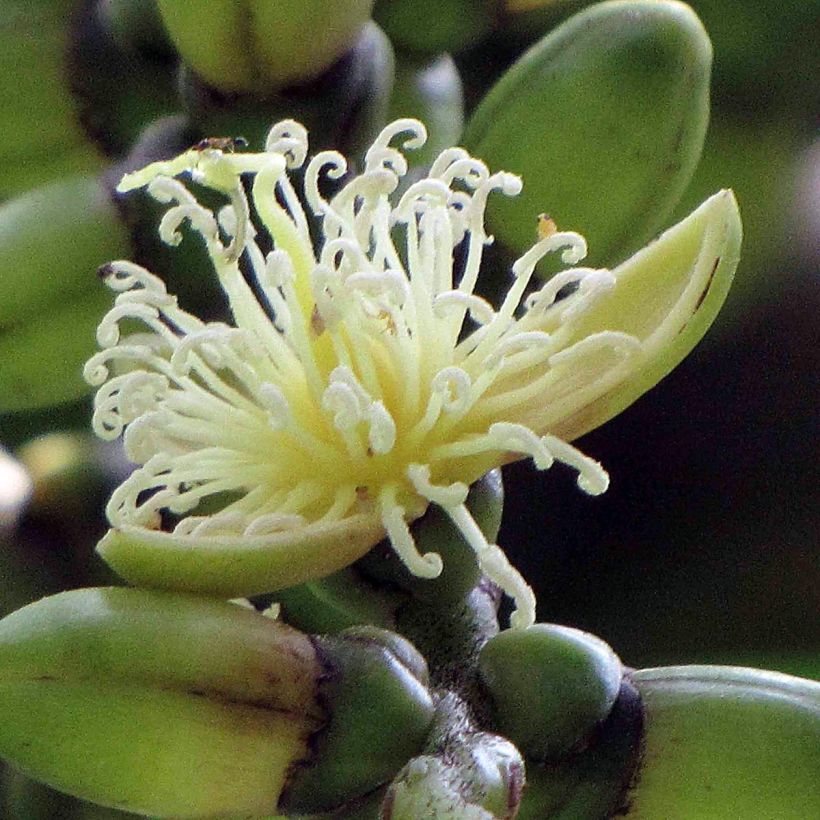

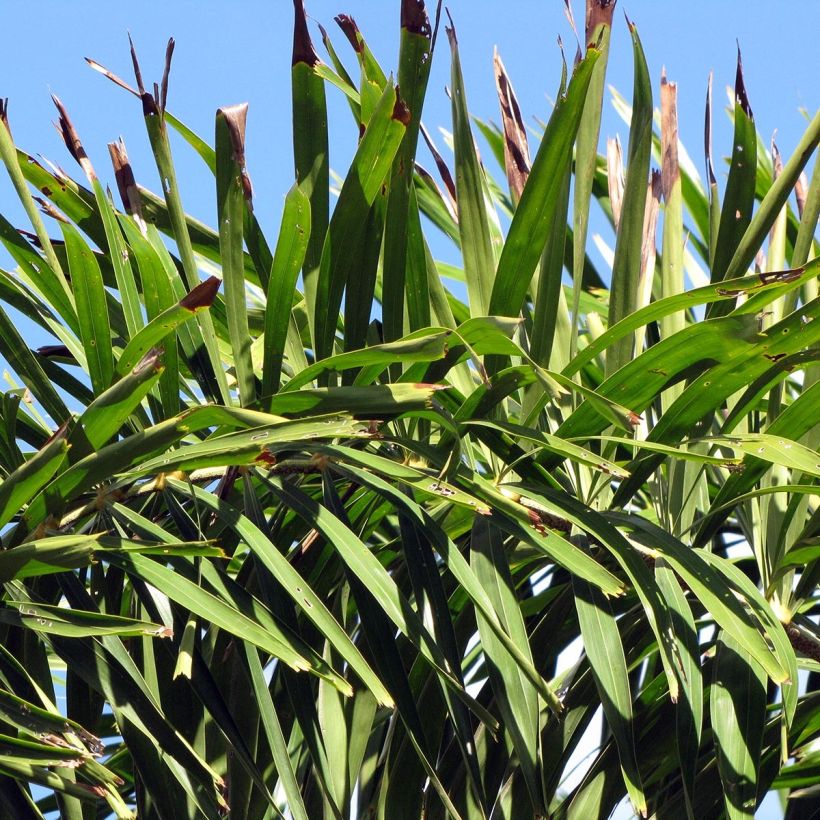

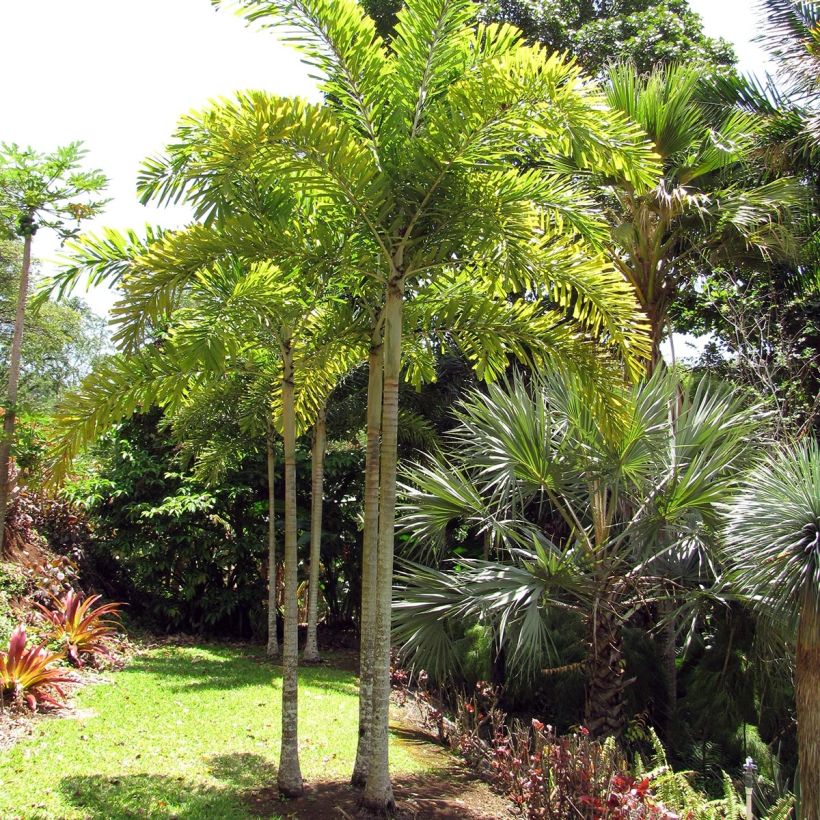

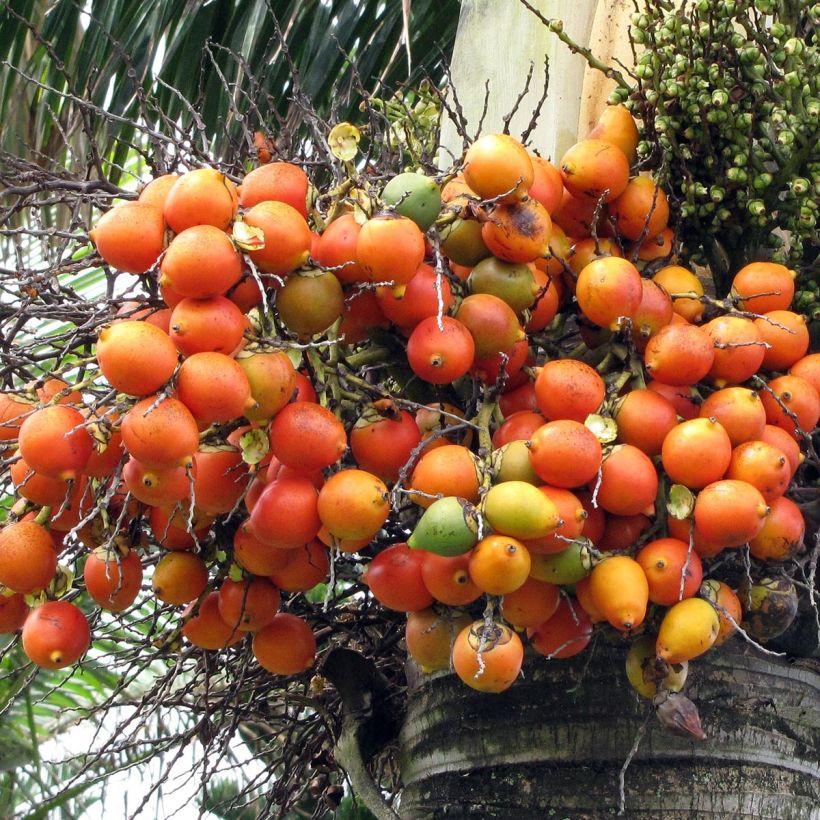

Plant habit
Flowering
Foliage
Botanical data
Wodyetia
bifurcata
Arecaceae (Palmae)
Foxtail Palm
Australia
Other Palm trees A to Z
Planting and care
This Wodyetia bifurcata palm tree is a hardy but undemanding plant that enjoys the sun and heat and perishes below -4 °C (24.8 °F). Any well-drained and not too dry soil will suit it. Even if this plant tolerates periods of moderate drought when installed in open ground, watering will promote rapid growth and luxuriant vegetation. It adapts very well to cultivation in pots or large containers. Young plants fear direct sunlight, while adult subjects accept it very well. In winter, watering should be slightly reduced, but the growing substrate should never completely dry out. It requires little maintenance, with dead leaves falling off on their own.
Pot cultivation:
Choose a large pot or a perforated bottom container with a capacity of 40 litres. Prepare a mixture composed of 25% garden soil, 50% compost or humus and 25% sand. Add a little crushed horn. Mix well. Partially fill your container, not without placing a drainage layer at the bottom (clay balls, gravel, broken terracotta pots, etc.). Place your palm tree on the mixture, so that the neck (the area where the roots originate) does not exceed the pot but is not buried too deep under the substrate either. Add the rest of the mixture around the root ball, firming it down. Water in multiple stages to saturate the substrate with water and remove air.
Place your palm tree in a very bright place, avoiding direct sunlight (not behind a window). In winter, the optimal temperature of the greenhouse or conservatory will be around 3 °C (37.4 °F). Mist the foliage regularly to counteract dry air if necessary. Do not hesitate to group your exotic plants together, as they will contribute to humidifying the air and creating a favourable environment. Clean the leaves with a sponge to remove dust. Outside, initially place it in partial shade to protect its foliage. After two weeks in partial shade, you can expose it to full sun. Carry out regular applications of complete liquid fertiliser for green plants, once a month from March to August.
Planting period
Intended location
Care
This item has not been reviewed yet - be the first to leave a review about it.
Evergreen shrubs
Haven't found what you were looking for?
Hardiness is the lowest winter temperature a plant can endure without suffering serious damage or even dying. However, hardiness is affected by location (a sheltered area, such as a patio), protection (winter cover) and soil type (hardiness is improved by well-drained soil).

Photo Sharing Terms & Conditions
In order to encourage gardeners to interact and share their experiences, Promesse de fleurs offers various media enabling content to be uploaded onto its Site - in particular via the ‘Photo sharing’ module.
The User agrees to refrain from:
- Posting any content that is illegal, prejudicial, insulting, racist, inciteful to hatred, revisionist, contrary to public decency, that infringes on privacy or on the privacy rights of third parties, in particular the publicity rights of persons and goods, intellectual property rights, or the right to privacy.
- Submitting content on behalf of a third party;
- Impersonate the identity of a third party and/or publish any personal information about a third party;
In general, the User undertakes to refrain from any unethical behaviour.
All Content (in particular text, comments, files, images, photos, videos, creative works, etc.), which may be subject to property or intellectual property rights, image or other private rights, shall remain the property of the User, subject to the limited rights granted by the terms of the licence granted by Promesse de fleurs as stated below. Users are at liberty to publish or not to publish such Content on the Site, notably via the ‘Photo Sharing’ facility, and accept that this Content shall be made public and freely accessible, notably on the Internet.
Users further acknowledge, undertake to have ,and guarantee that they hold all necessary rights and permissions to publish such material on the Site, in particular with regard to the legislation in force pertaining to any privacy, property, intellectual property, image, or contractual rights, or rights of any other nature. By publishing such Content on the Site, Users acknowledge accepting full liability as publishers of the Content within the meaning of the law, and grant Promesse de fleurs, free of charge, an inclusive, worldwide licence for the said Content for the entire duration of its publication, including all reproduction, representation, up/downloading, displaying, performing, transmission, and storage rights.
Users also grant permission for their name to be linked to the Content and accept that this link may not always be made available.
By engaging in posting material, Users consent to their Content becoming automatically accessible on the Internet, in particular on other sites and/or blogs and/or web pages of the Promesse de fleurs site, including in particular social pages and the Promesse de fleurs catalogue.
Users may secure the removal of entrusted content free of charge by issuing a simple request via our contact form.
The flowering period indicated on our website applies to countries and regions located in USDA zone 8 (France, the United Kingdom, Ireland, the Netherlands, etc.)
It will vary according to where you live:
- In zones 9 to 10 (Italy, Spain, Greece, etc.), flowering will occur about 2 to 4 weeks earlier.
- In zones 6 to 7 (Germany, Poland, Slovenia, and lower mountainous regions), flowering will be delayed by 2 to 3 weeks.
- In zone 5 (Central Europe, Scandinavia), blooming will be delayed by 3 to 5 weeks.
In temperate climates, pruning of spring-flowering shrubs (forsythia, spireas, etc.) should be done just after flowering.
Pruning of summer-flowering shrubs (Indian Lilac, Perovskia, etc.) can be done in winter or spring.
In cold regions as well as with frost-sensitive plants, avoid pruning too early when severe frosts may still occur.
The planting period indicated on our website applies to countries and regions located in USDA zone 8 (France, United Kingdom, Ireland, Netherlands).
It will vary according to where you live:
- In Mediterranean zones (Marseille, Madrid, Milan, etc.), autumn and winter are the best planting periods.
- In continental zones (Strasbourg, Munich, Vienna, etc.), delay planting by 2 to 3 weeks in spring and bring it forward by 2 to 4 weeks in autumn.
- In mountainous regions (the Alps, Pyrenees, Carpathians, etc.), it is best to plant in late spring (May-June) or late summer (August-September).
The harvesting period indicated on our website applies to countries and regions in USDA zone 8 (France, England, Ireland, the Netherlands).
In colder areas (Scandinavia, Poland, Austria...) fruit and vegetable harvests are likely to be delayed by 3-4 weeks.
In warmer areas (Italy, Spain, Greece, etc.), harvesting will probably take place earlier, depending on weather conditions.
The sowing periods indicated on our website apply to countries and regions within USDA Zone 8 (France, UK, Ireland, Netherlands).
In colder areas (Scandinavia, Poland, Austria...), delay any outdoor sowing by 3-4 weeks, or sow under glass.
In warmer climes (Italy, Spain, Greece, etc.), bring outdoor sowing forward by a few weeks.


































